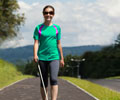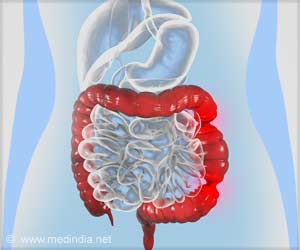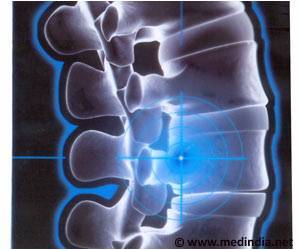
The newly discovered biomarker, detectable in patients' urine, is secreted by Onchocerca volvulus worms during an active infection. The biomarker could form the basis of a portable, field-ready test with significant advantages over current diagnostic methods.
"There has been a need for an inexpensive, non-invasive test that can discriminate between active and non-active river blindness infections during treatment campaigns," said Kim D. Janda, who is Professor and Ely R. Callaway, Jr. Chair in Chemistry, member of the Skaggs Institute for Chemical Biology, and director of the Worm Institute of Research and Medicine at TSRI. "We think that this new biomarker can be the basis for such a test."
The work is described in an online Early Edition of the Proceedings of the National Academy of Sciences during the week of February 25, 2013.
Leading Cause of Vision Loss
A leading cause of vision loss, Onchocerciasis infections are transmitted among humans by river-dwelling blackflies in tropical regions. The vast majority of cases occur in sub-Saharan Africa, although pockets of endemic infection exist in Yemen and in Central and South America. The major symptoms of the disease, including blindness, result from the spread of O. volvulus "microfilariae"—early-stage larval worms—to the eyes and other tissues, where they trigger damaging inflammatory reactions.
Advertisement
Current diagnostic methods include the painful cutting of "skin snips" from patients for microscopic analysis and an ELISA antibody test for microfilariae, which may yield positive results even for non-active infections. "You can still have circulating antibodies to a nemotode antigen in your blood for a long time after the infection is gone," said Janda.
Advertisement
A better diagnostic marker would be a metabolite of O. volvulus that appears only during an active, microfilariae-producing infection and that could determine both the presence and the severity of disease. In 2010, Janda's laboratory demonstrated the feasibility of this approach by sifting through the small-molecule metabolites within blood samples from river blindness patients—a technique called "metabolome mining"—and finding a set linked to active onchocerciasis infection. For the new study, the team sought a simpler set of biomarkers—or better yet, a single unique biomarker in urine.
Daniel Globisch, a postdoctoral fellow in the Janda laboratory, started with samples of urine from onchocerciasis-infected and non-infected Africans. Using a powerful laboratory technique called liquid chromatography mass spectrometry, he measured the concentrations of hundreds of small-molecule metabolites in the samples. Excitingly, between the infected and non-infected urine samples, one difference stood out clearly: "An unknown small molecule was highly elevated in the samples from infected individuals," said Globisch.
In a process akin to looking for the proverbial needle in the haystack, Globisch was able to purify the mysterious metabolite, and, using mass spectrometry, determine the chemical identities of its individual pieces. "The metabolite itself wasn't present in the databases, so I searched the literature for what is known about the biosynthesis and metabolic pathways in these nematodes," Globisch said. Ultimately, he was able to identify the metabolite as N-acetyltyramine-O,β-glucuronide. Remarkably, this molecule's inception can be traced to O. volvulus as a neurotransmitter molecule that is secreted by young, reproducing worms and then modified by the human body on its way to being excreted in urine.
"It's a spectacular find in terms of biomarkers as it does not occur naturally in humans," Globisch said. Levels of the metabolite in a non-infected North American control sample were near zero.
Toward a Field Test
In urine samples from Africans with active onchocerciasis infections, Globisch found that levels of the biomarker were on average four to six times higher than in samples from Africans with non-active infections. In a separate test, the team determined that a full course of doxycycline treatment, which sterilizes or kills infecting worms by destroying their symbiotic bacteria, also reduced levels of the biomarker to near-normal. "This biomarker appears to be specific for an active infection," Globisch said. The wide gap between biomarker levels in active and non-active infections suggests that a field test based on the biomarker would be robustly useful.
Such a diagnostic, said Janda, might ultimately be a simple urine dipstick test, much like a home pregnancy test, which would indicate the amount of the O. volvulus biomarker present in the sample. "Ultimately for this to be of value in Third World countries we will need to morph this biomarker into something that's inexpensive, simple to use, tolerant of extreme temperatures and portable—basically distilling our finding to a test that can be carted around in a backpack," Janda said.
Importantly, he adds that Globisch's metabolome-mining approach in theory should be applicable to the development of diagnostic tests for other worm diseases.
Source-Eurekalert













